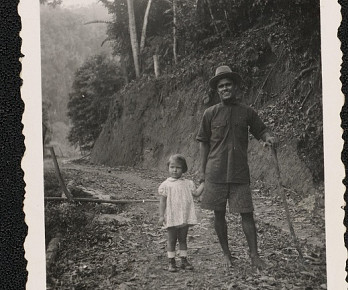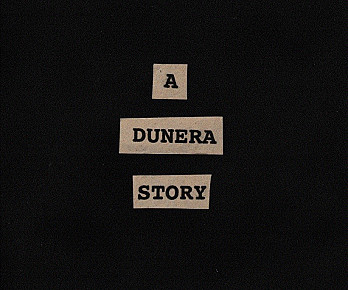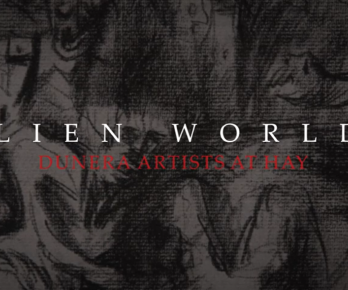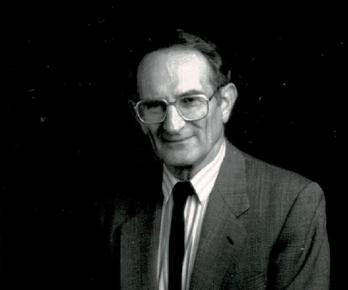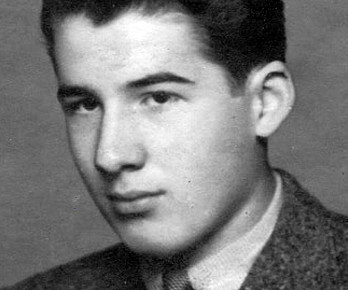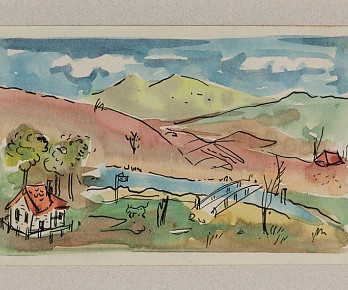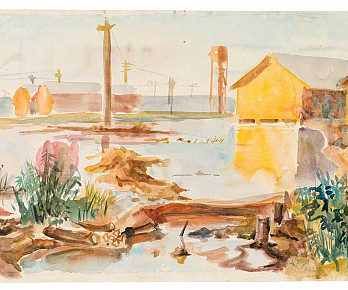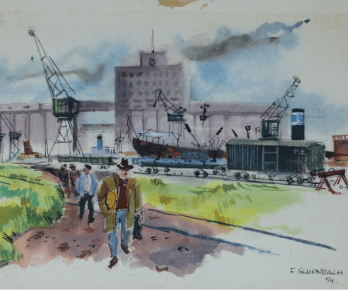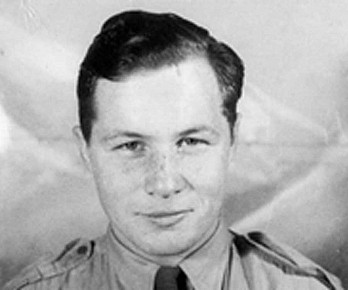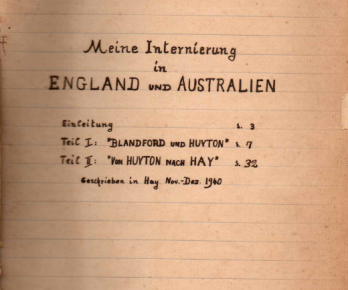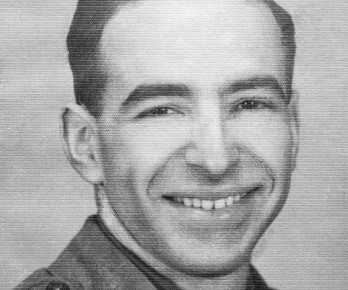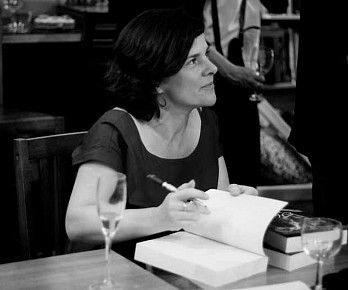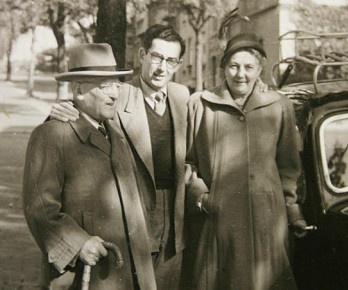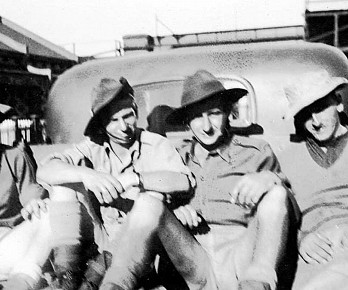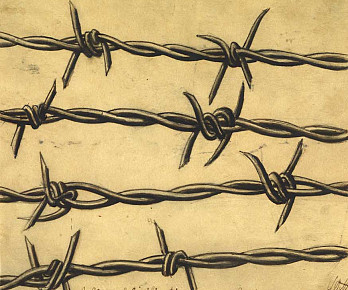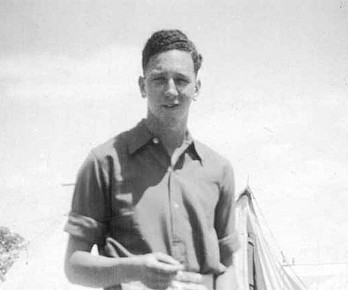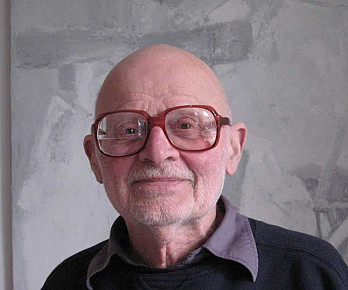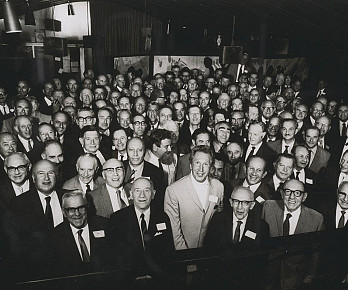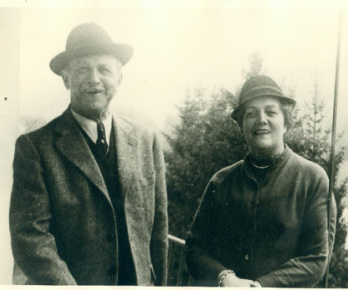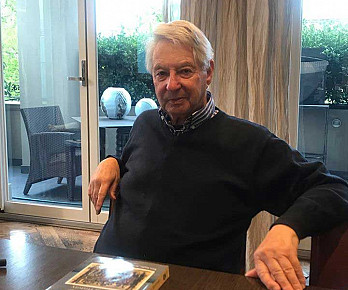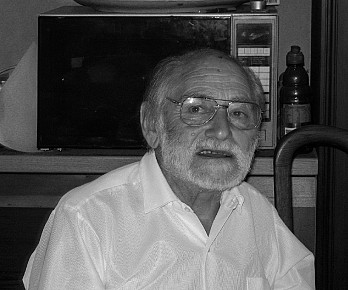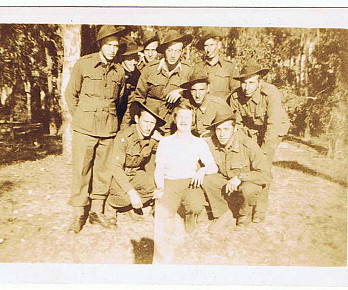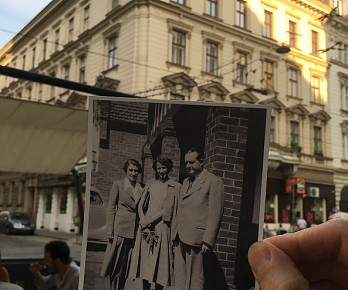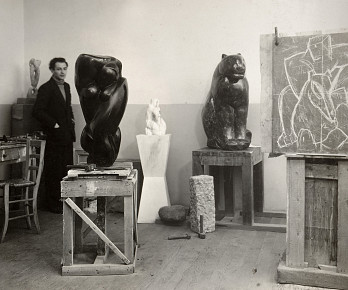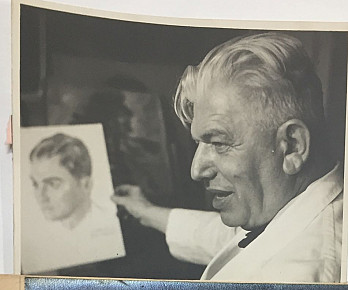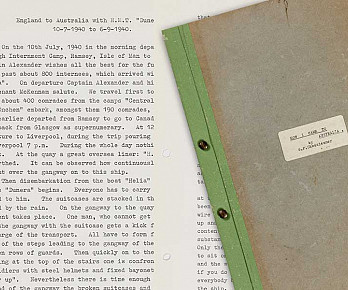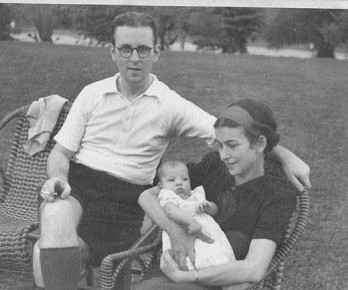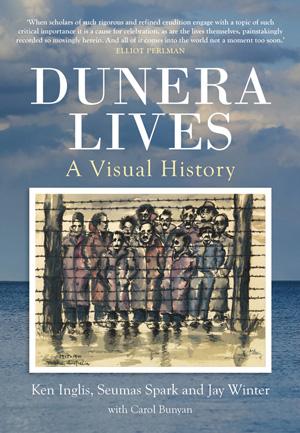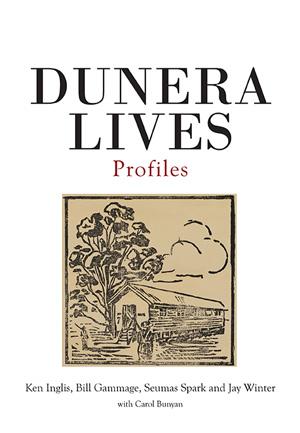Dunera and Queen Mary Stories
- Show All
- Artists
- Composers
- Craftsmen
- Photographers
- Testimony
- Writers
- Other
-
Not every internee who came by boat to Australia during the Second World War was male nor an adult. The Queen Mary, brought another group of passengers to Australian shores: families. Ruth Simon arrived in Australia at just four years old.
In the final year of her history undergraduate degree, Hannah Robinson, great-granddaughter of Heinz and Fay Castles (Heinz Schloesser and Fay Jackson), was asked to write a personal history. She chose to tell her family's story in scrapbook form.
Many Dunera internees practiced art as a way to make connections, record their surroundings and explore their creativity. This video tells some of those stories.
For those with a keen interest in economics, the name Gerry Gutman may be familiar. Gutman made a name for himself as an economist and proponent of labour market reform and authored the book, 'Retreat of the Dodo'.
Many, and probably most, Dunera men didn’t speak publicly about their lives, and especially about their wartime lives. Paul Mezulianik was one of these silent men.
Until recently, not much was known about the life of artist and designer Emil Wittenberg during his time in Austria - until Karin Sedlak stumbled across a stack of letters between Wittenberg and the Austrian actress, Cissy Kraner.
Erwin Fabian died in Melbourne on 19 January 2020, aged 104. Erwin, one of Australia's pre-eminent artists, came to Australia on the Dunera, though he rarely said so. The Dunera boy label was not for him.
Of the many artists the Dunera bore across the ocean to Australia, none are more well-known for both biting political commentary and atmospheric scenes than Friedrich (Fritz) Schonbach.
Aboard the first Kindertransport to depart Germany for Britain, Peter Danby (formerly Danziger) could not have known the unlikely journey ahead.
While interned in late 1940, Günter Altmann put pen to paper to recount, in his native German, his experiences, from his arrest in Britain to the journey to Australia aboard the Dunera. This document is, for the first time, available in English.
While interned in late 1940, Günter Altmann put pen to paper to recount, in his native German, his experiences, from his arrest in Britain to the journey to Australia aboard the Dunera. This document is, for the first time, available in English.
'Am I a writer because this is the sort of thing spilling from the family closet? Or just ‘fortunate’ to be the recipient of others’ painful history?' asks Belinda Castles in an article in the Southerly Journal.
Hans Lorraine was not an internment artist. He started painting in the 1950s, creating a visual chronicle of peacetime Australian life. But he was a Dunera artist.
Before he was a world famous fashion photographer, Helmut Newton was interned at Tatura as a German-Jewish refugee.
We knew we had our work cut out when we started our search for Emil Wittenberg, one of the most prolific of Dunera artists.
In May, 2019, two of our team travelled to Canberra to interview Bern Brent – in his words, ‘one of the last Dunera boys still vertical’.
Klaus Friedeberger (1922-2019) was among the most talented, dynamic and thoughtful of Dunera artists. He was unusual among Dunera artists, and European artists generally, in seeing the mysteries and beauty of the Australian landscape.
In the years before and during the Second World War, Jewish and anti-Fascist doctors, psychiatrists and psychologists left Nazi-occupied Europe for Australia.
Paul should be remembered as a fighter, a wonderful painter and a passionate lawyer. Part of his story was in Australia, but he also had a life in Britain, where he married his wife, Ena, and in Austria, where he advocated for the Jewish community.
‘I didn’t really know that many of the people that I had met or had connections with were Dunera boys’, Phillip begins. ‘It only really emerged later.’
‘At the time of his death, he was perhaps my closest friend,’ recalls Justin Zobel, sitting at the circular table in his brightly lit office at the University of Melbourne. It's an unexpected way to speak of one's stepfather.
While some of the men who came to Australia on the Dunera chose later to speak about their experiences both before the war and on the ship itself – whether to the press, public, or simply to families and friends – there were many who remained silent.
Unlike many descendants of Dunera and Queen Mary passengers, Joannah Huntley came to her family’s internee history comparatively late.
Heinz Henghes was born Gustav Heinrich Clusmann in Hamburg, Germany in 1906. Throughout his life, he lived and made art across the globe. In recent times, his son Ian has been writing about his father with a view to producing a book-length biography.
Gerhard Boronowski and his father Viktor were arrested in Britain and deported to Australia on the Dunera. Eventually, Gerhard settled in Canada, where many years later, his son Alex began searching for information about his father's story.
Unlike many who came to Australia as teenagers or young adults, Robert Hofmann boarded the Dunera at age 51 with a life and career in Europe behind him.
Georg Chodziesner's record of the voyage of the Dunera, told coolly and dispassionately, is probably the most important and comprehensive account available to historians.
Miriam Gould tells the story of her parents, Werner and Ilse Baer.

'Dunera Lives'
A Visual Historyby Ken Inglis, Seumas Spark and Jay Winter with Carol Bunyan
The Monash University Publishing book that inspired this website.
This book tells that story primarily through images. The images, beautiful and powerful, reveal tales of struggle, sadness, transcendence, and creativity, and describe the lives of these men and of the society in which they lived, first as prisoners and then as free men. A contribution to the history of Australia, to the history of migrants and migration, and to the history of human rights, this book helps to tell a story the full dimensions and complexity of which have never been described.

'Dunera Lives'
Profilesby Ken Inglis, Bill Gammage, Seumas Spark and Jay Winter with Carol Bunyan
This second volume of Dunera Lives presents the voices, faces, and lives of 20 people, who, together with nearly 3000 other internees from Britain and Singapore, landed in Australia in 1940. All over the world there were Dunera Lives, those of men and women who passed through the upheavals of the Second World War and survived to tell the tale. Here are some of their stories.

